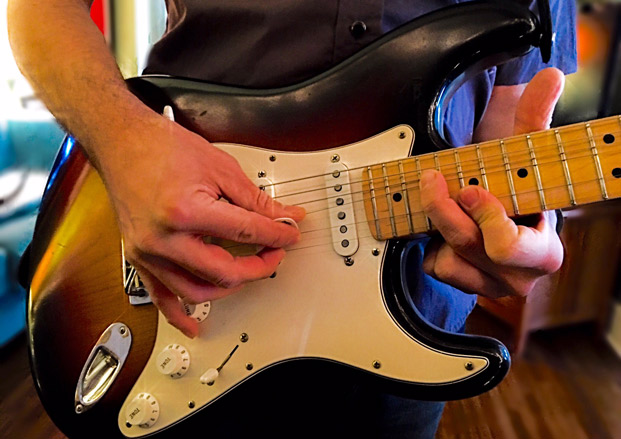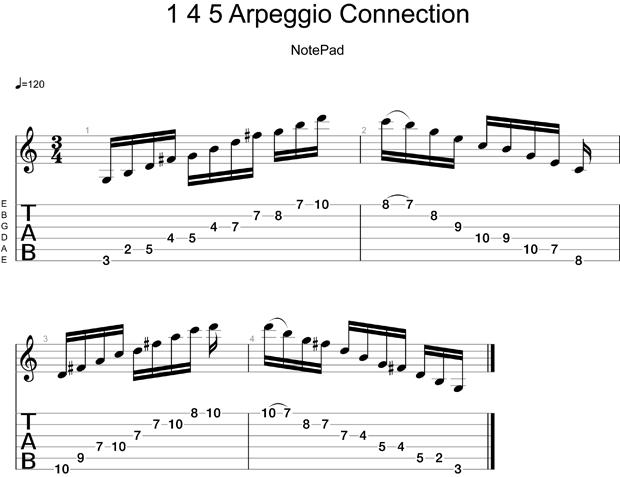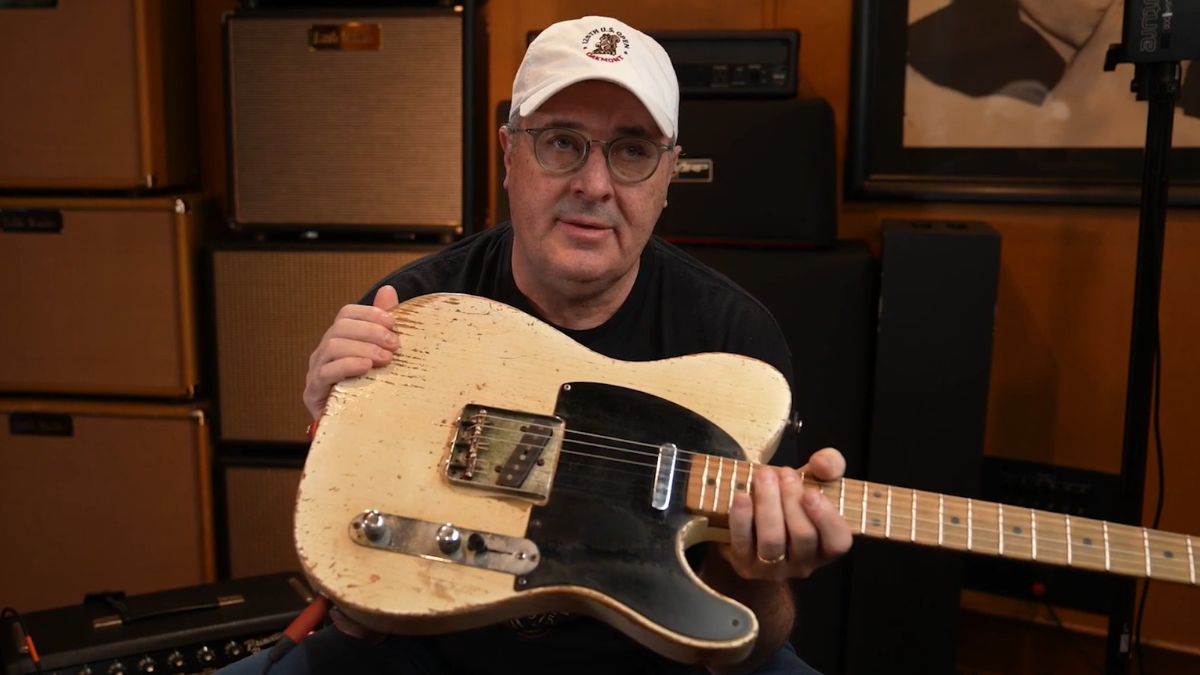Finger Twisters: Re-Thinking Solos Over the I IV V Progression

Hey there, faithful readers! In this second installment of Finger Twisters (Click here for Part 1), I'd like to examine, or shall I say re-examine, soloing over the I IV V progression.
I know what you're thinking: Not another column about blues licks! Rest assured, that is not the case.
This exercise, or finger twister, is a moveable arpeggio pattern, but it will be in G major for our purposes today. The first measure is an ascending I chord/arpeggio of the major scale, which extended out (1 3 5 7), is a major 7th chord/arpeggio, which is a G major 7th chord/arpeggio (G, B, D, F#).
The second measure is a descending IV chord arpeggio, which is also a major 7th chord and is a C major 7th chord/arpeggio (C, E, G, B). The third measure is an ascending V7 chord/arpeggio, which spells out a D7 chord/arpeggio (D, F#, A, C). Lastly, to end up back where we started, we have the descending I chord/arpeggio again, which is the G major chord/arpeggio (G, B, D, F#).
As I stated above, these are moveable patterns, so you can play them all over the fretboard. Try them in A, C and Bb major, for example.
Be creative with it. It does stand alone as a string-skipping, alternate-picking, "get from one end of the fretboard to the other" exercise, but if you incorporate some of the ideas melodically into your lead playing the next time you're jamming a I IV V with fellow musicians or bandmates, you will come up with something new and fresh on your way to discovering your own voice on the instrument. That, at the end of the day, is what my column is about.
I left suggested left-hand fingerings out for this reason; I want you to find out what works best for you. As always, practice this with a metronome slowly and eventually build up to a faster tempo.

Guitarist Richard Rossicone is a veteran of the New York City and Long Island original and cover band scene. He's been playing since he was 8, when he attended his first concert (Kiss) and saw Pete Townshend smash a guitar. He has studied with various instructors over the years, which led him to a career in music therapy. He began his educational journey at Queensboro Community College, where the faculty introducing him to classical music. He received his associate's degree in fine arts in 1997 and went on to receive his bachelor's in music therapy in 2001 and his master's in music therapy from New York University in 2004. He's been Board Certified as a music therapist since 2002. Richard continued his studies at C.W. Post University, pursuing a second master's degree in classical guitar performance and music history, studying under Harris Becker. He's been teaching guitar, piano and theory since 2002 and in 2006 started his own company, Rossicone Music Studios. Visit him at Axgrinder.com and his Complete Guitarist Facebook page.Check out Richard's new book, 'The Complete Guitarist Handbook: Vol. 1,' which is available at Amazon.com.
Get The Pick Newsletter
All the latest guitar news, interviews, lessons, reviews, deals and more, direct to your inbox!
She wowed Sonny Landreth and Carlos Santana called her the “future” – Erja Lyytinen shares her 6 go-to slide licks for unlocking more expressive soloing
“He combined the passion of Gary Moore with riffs inspired by Zeppelin and Deep Purple, plus unexpected melodic twists like Ritchie Blackmore”: He was one of ’80s rock’s great journeymen – and his searing hot lead work inspired Marty Friedman










